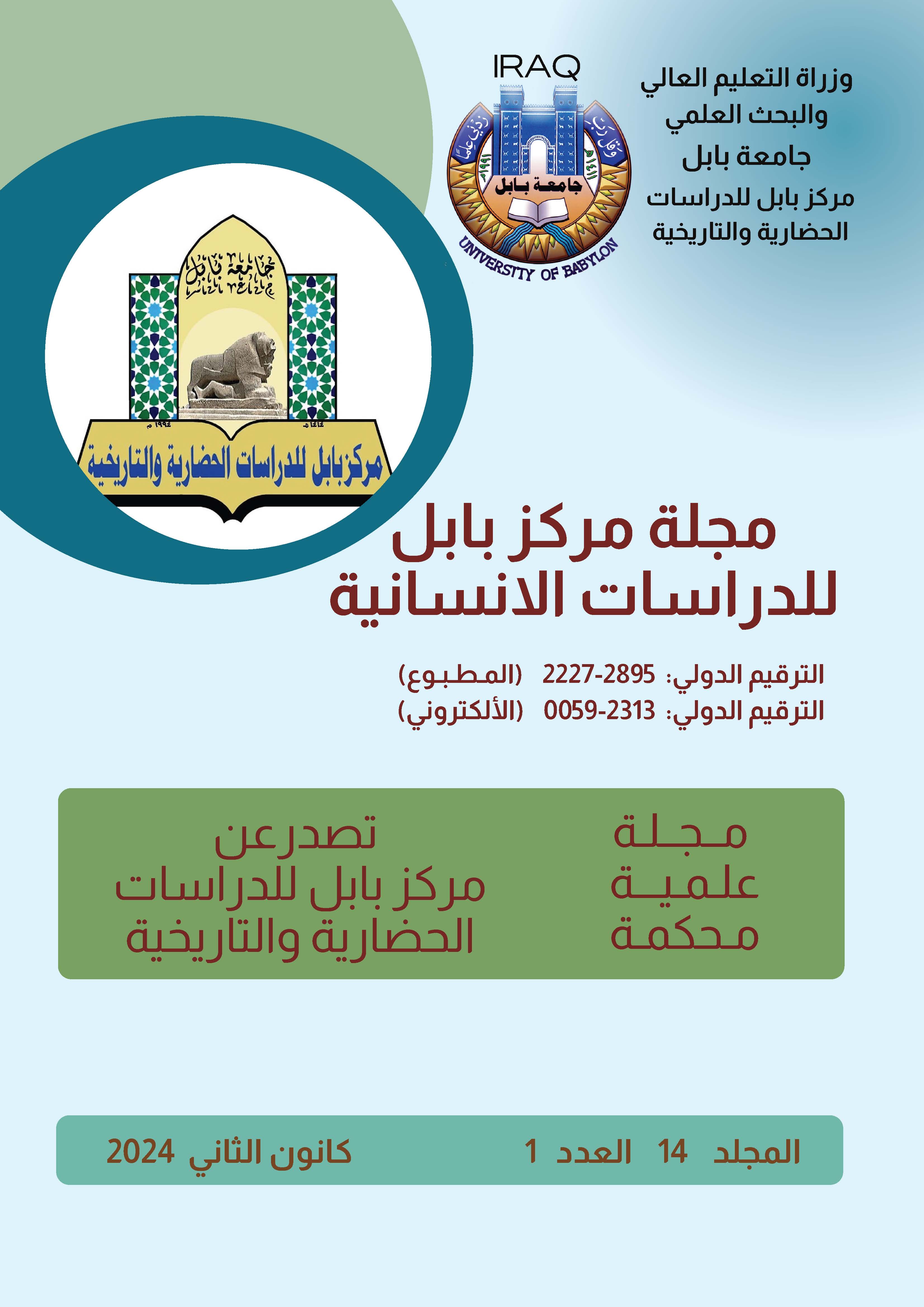Prohibition Tools in Semitic Languages A Comparative Study
Keywords:
language - Prohibition Tools – Arabic – Hebrew – Syriac - AkkadianAbstract
In this research we studied the method of forbidding and its tools in Semitic languages. As this method is considered one of the grammatical methods that the Semitic languages group shares in. This study focused mainly on studying the grammatical tools used in this method, as it was studied in four of the sister Semitic languages that were the subject of the research, namely (Arabic language, The Hebrew language, the Syriac language and the Akkadian language).
First, I studied the tool of prohibition in the Arabic language, which grammarians called (no) the nahiyyah or (no) the order. This tool was studied in terms of the structural composition and in terms of its entry into the present tense verb and the necessity of its sentence or its calming, and its significance to time in terms of transmitting the present tense verb To the future and use it with the addressee, the absent and the speaker, and review its metaphorical meanings.
Then studying the tools of prohibition in the Hebrew language, as it became clear that there are two tools for prohibition in this language, namely, the tool
(לֹא) and the tool (אַל), and through their study it became clear that each of these two instruments has its own work. Where the use of the tool (לֹא) in the divine prohibitions and prohibitions, and the strict and permanent, and the use of the tool (אַל) in the immediate and current prohibitions and that both tools were used in the books of the Old Testament. The forbidding tool in the Syriac language has also been studied, which is the tool (لاُ), and its entry into the present tense in the speaker, the absent, and the speaker.And studying the tools of prohibition in the Akkadian language, which is both the tool (La) and the tool (uL). Through the study, it was found that these tools used in the method of prohibition in Arabic, Hebrew, Syriac and Akkadian are almost the same in terms of meaning and significance in ceasing or preventing the performance of the act and its entry exclusively On the present tense and moving its time to the future, this indicates that these languages actually belong to one language known as the mother Semitic.







